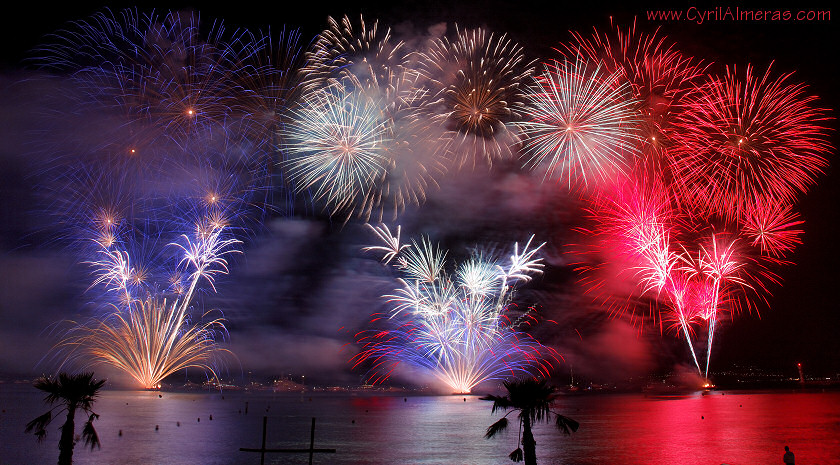7 great tips for photographing fireworks
There are lots of reasons why you might want to photograph a fireworks display. For starters, they can be stunningly beautiful, the contrast between the bright lights, flashes and sparkles and vivid colours against the inky black of the night sky being truly breath-taking.
The second reason to photograph fireworks, apart from their undoubted aesthetic qualities, is that they tend to be used to mark really special occasions. You’ll choose fireworks if you really want to celebrate in style and make an occasion truly memorable, so you’ll want a memento of the night to look back on in later years. Lastly, fireworks make great subjects for photographic competitions, so you might want to pop along to a local display to see if you can snap a winning shot.
Photographing fireworks – not as easy as it looks!
Both amateurs and professional photographers can have problems when it comes to taking photos of a fireworks display. There are several challenges to overcome, from the lightning speed of the rockets to the flashes and fluctuations in light levels. Here are 5 tips to help you get professional quality fireworks photos:
Use a tripod. The key to a good shot of fireworks is to keep the camera as still as possible, to avoid blurring and end up with a clear, crisp photo. For this, it is a good idea to mount your camera on a tripod and use a remote shutter to take the photos so you don’t have to touch it at all.
Frame your photo. Fireworks are undoubtedly beautiful on their own, but a bit of context can make them even more awesome. Try framing your fireworks against a cityscape, the ground or a landmark.
Get more shots at the beginning of the display – this will help you avoid the smoke! Later on in a display, the clarity of your photos could be spoilt by the smoke build-up from previous pyrotechnics. Get as many shots as you can in early, but keep going through the display.
Scout out a good location. If you have a position in mind, make sure to get there early so you can avoid the crowds. Finding some height is always a good idea, helping you to get above everyone and gaining a unobstructed view of the night sky.
Check your photos as you go. This will help you spot any problems and make adjustments. If you don’t do this, you could get home to find that none of your photos have come out.
Experiment! On the odd photo, it can be fun to experiment with letting the shot go out of focus. This can produce fantastical effects with broken and overlaid light, lines and colour – which can be really unusual.
Keep the flash off. It might be night-time, but the fireworks provide all the illumination any photographer could ever need. If you leave the flash on, it will most likely ruin your photos.

